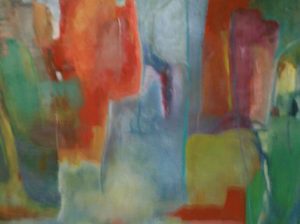Image: A Map of a Part of the World © Anne Gilliland, 1979.
Today’s #TarGramChallenge is #CampusAbstract, and so we are considering the many abstract paintings in my office. I first became interested in copyright when I was an art student in college. I thought it was very interesting that I could own a copyright just by affixing notice (the copyright symbol, name, and date) to my work. This was the law at the time, but today the rules have changed yet again, and now no formalities are needed to obtain a copyright.
Did you know that U.S. copyright law gives some special rights to visual artists? The Visual Artists’ Rights Act of 1990 (VARA) grants some moral rights to creators of some types visual art, primarily fine art prepared for exhibition purposes. For the purposes of the VARA, these moral rights are
- the right to be recognized as the author of a work
- the right to prevent attribution for work s/he did not create
- the right to prevent attribution if a work has been modified in a way that prejudices the creator’s honor or reputation,
- the right to prevent the destruction of a work of “recognized stature”
In this country, these rights can be waived but not transferred. And the rights are distinct from ownership of the copyright and ownership of the physical object. Moral rights are more common and apply to more types of works of authorship in Europe than they do in the United States.
I created the painting reproduced above prior to 1990. Do I have moral rights in the painting? Yes, I would, if I transfer title of the painting to someone else.
